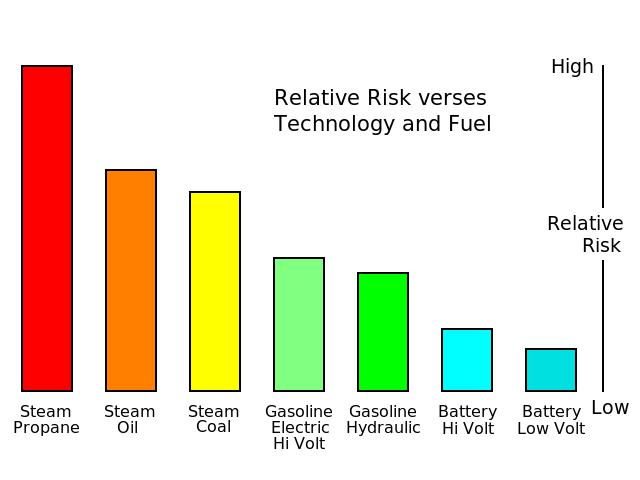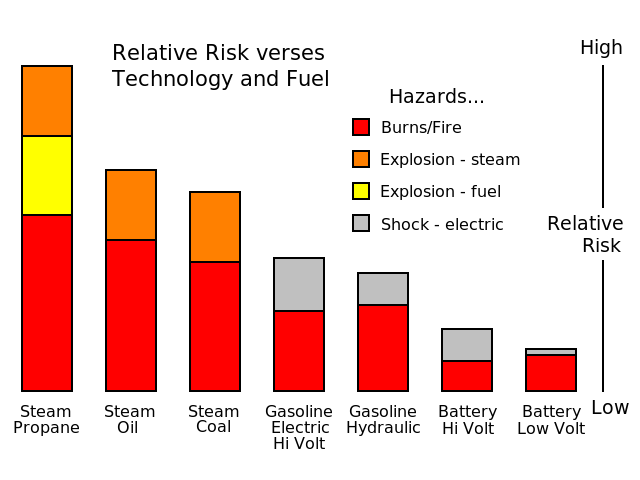Locomotive Hazards and Risk versus
Technologies and Fuels

Figure 1
Figure one shows the relative risks of operating various locomotive technologies and fuel types. Note: This study does not include risks due to hazards not dictated by locomotive or fuels types - such as derailments. It also omits some incidental hazards associated with specific locomotive types - such as moving parts in machinery. |

Figure 2
Figure two also breaks the risks down by hazards. The larger a color region is on this drawing, the higher the relative risk for that type of hazard. Keep in mind that any and all risks can be managed safely. However, as a risk becomes greater, the need to manage it becomes much more important. |
High Pressure Steam This risk is about the same no matter how you fire a steam locomotive. It includes the risk of explosion and burns from superheated steam. Propane By far the most dangerous way to fire anything. Many of us have or know someone with first-hand experience with some type of propane accident - either explosion or fire or both. These are usually associated with barbeque grills and stoves, but there are others. Oil Oil is flammable. It can be spilled and catch fire. Not as big of a risk as using or handling gasoline or propane, but the risk is still there. Coal About the safest way to fire a steamer. Yes there are still risks with cinders, hot coals, and ashes, but still safer than liquid or gaseous state fuels. Gasoline Mostly used with internal combustion engines, gasoline can be spilled, and is quite volatile. It can also be an eye hazard. Gasoline engines also carry an electrical shock hazard, as any and all have a spark plug. Hydraulic There are some risks with high pressure hydraulic systems. Fluids are generally flammable and can be leaked or spilled. Electric - High voltage This carries with it the possibility of electric shock - which generally can occur anytime electrical equipment is exposed and operating, such as during servicing. Electric - Low voltage Low voltage implies high current. With high current comes the increased chance of insulation fires caused by loose electrical connections. |
